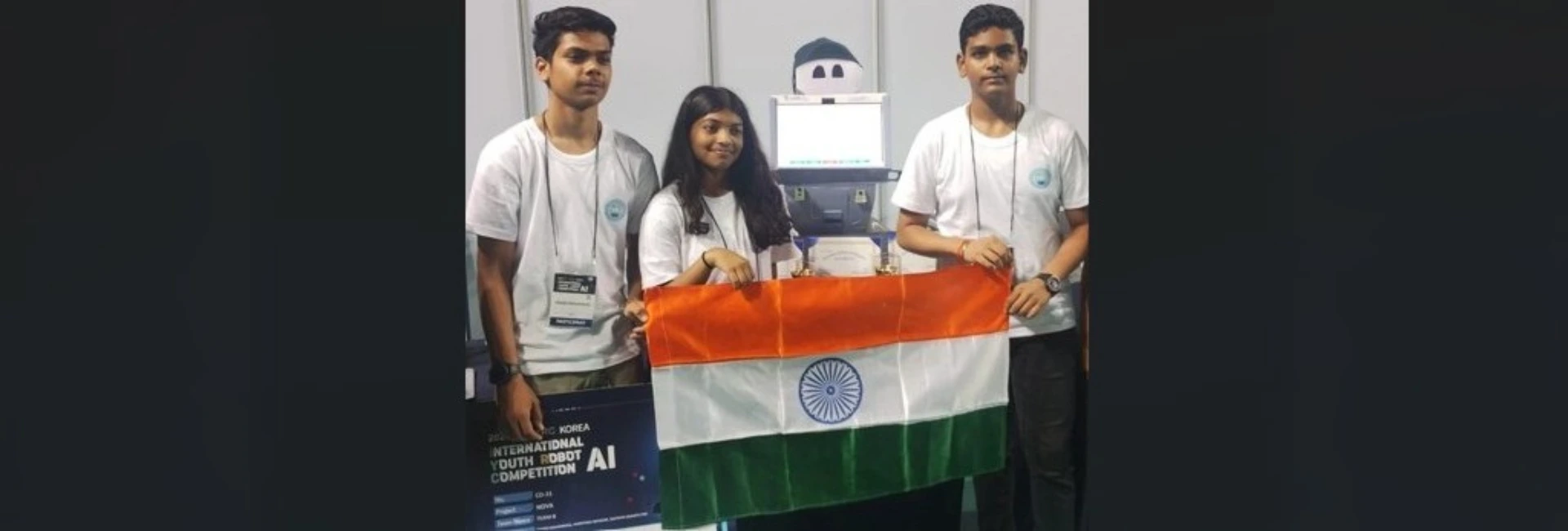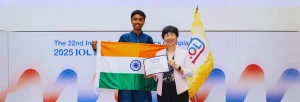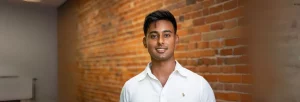(October 5, 2025) Mohammed Faaris, a high school student and promising young innovator, recently represented India among participants from 20 countries and secured first place along with his teammates Avanthika Bhasker and Saathvik Ananth Iyer at the International Youth Robot Competition (IYRC) held in Korea. Their winning creation, NOVA, an AI-powered humanoid companion robot, is designed to assist individuals with mental and visual impairments such as dementia, autism, and partial blindness.
“I couldn’t believe it at first. Winning among 20 countries was proof that what we built mattered. It showed that innovation from young people can make a real difference,” smiles Faaris, in a chat with Global Indian.
At a time when the world is increasingly looking at AI and Robotics for medical solutions, Faaris, a highly skilled robotics student, along with his team demonstrated exceptional problem-solving abilities with a focus on social impact and inclusivity with their innovation.
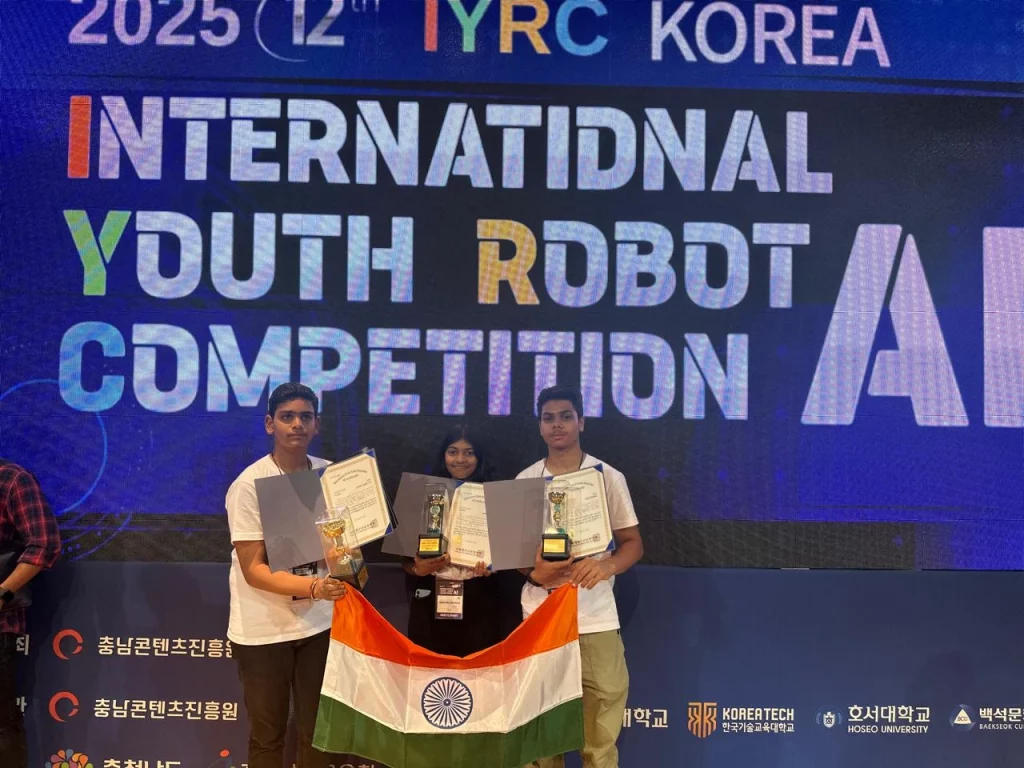
Saathvik Ananth Iyer, Avanthika Bhasker and Mohammed Faaris (left to right)
The spark of an idea
Faaris says the idea for their innovation, NOVA came from seeing how individuals with medical conditions often struggle with daily activities and how their families cannot provide constant support. “Most assistive tech only focuses on one condition, so people with more than one challenge often don’t get full support.”
NOVA can recognize familiar faces, send reminders, ensure safety, provide emotional support, help with indoor navigation, and give a voice to non-verbal users.
How NOVA works
For partial blindness, it can guide the user to a place they want to go and avoid obstacles on the way. “We have special pre-trained buttons that speak out loud when pressed, so communication is easier.”
For autism in general, NOVA chats with the user, gives emotional support, and helps them feel less lonely.
Building the technology
Making NOVA involved combining different technologies. “It uses a camera for emotion recognition, AI conversation in Python, memory recall for dementia patients, voice-based navigation for visually impaired users, and pre-trained buttons for non-verbal communication,” explains Faaris, the Grade 10 student of Orchids The International School, Jubilee Hills, Hyderabad.
The team also added features like pill reminders and alerts for abnormalities to make it more practical for real-life use.
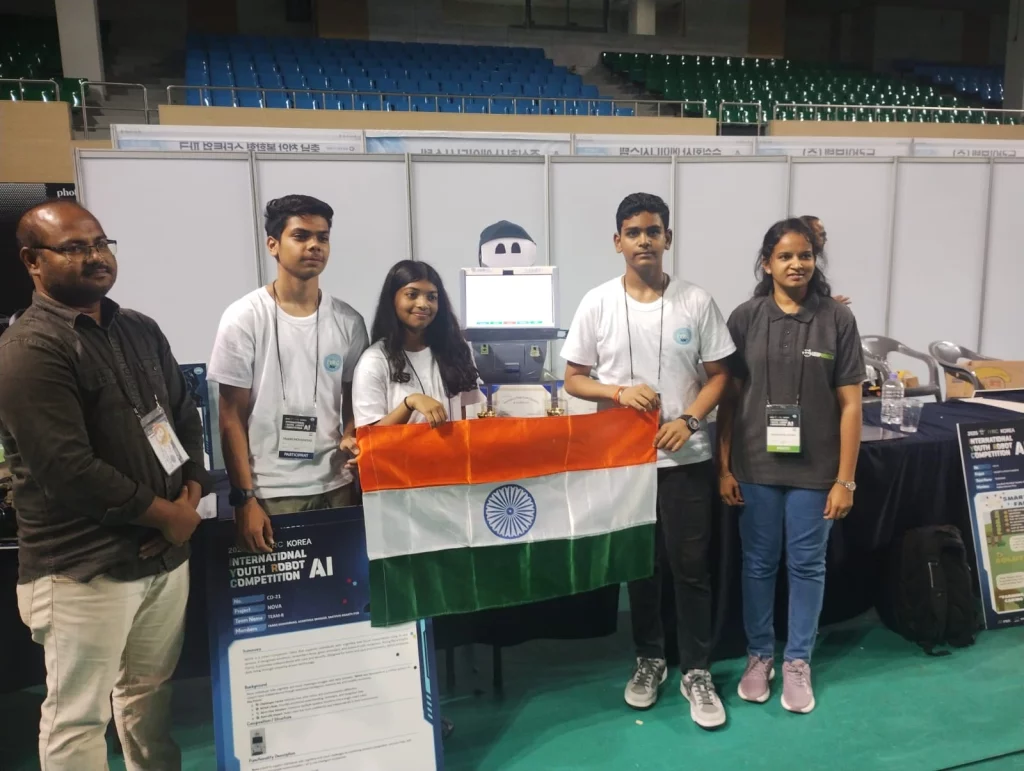

The winning team at IYRC
From concept to prototype
“It took several months to build NOVA, from conceptualizing the features and designing the prototype to integrating AI tools and testing it in different scenarios,” says Faaris, who has previously worked on smaller projects and prototypes exploring how robotics and AI can solve everyday problems. “Those earlier projects gave me the confidence to attempt something as ambitious as NOVA,” he remarks.
What sets NOVA apart is its human-centric design, built to provide not only functional assistance but also companionship and emotional support. “It’s not just a machine—it can talk, comfort, and make life easier for people who need extra support,” says the young innovator, pointing out that it’s about solving real problems and giving people dignity in their daily lives.
The winning moment
Initially, Faaris and his team thought he had lost the IYRC contest. “But when we heard our name announced as the winner, we were jumping with joy. The experience taught me the importance of not just technical innovation but also presenting ideas effectively,” says the youngster.
For the past 12 years, IYRC has provided a transformative platform that empowers children and youth worldwide to explore innovative technologies and nurture their creativity through robotics. The idea is to help youngsters transition from a mindset of competition and conflict to one of collaboration and communication, ensuring collective prosperity and advancement of humanity.
Global exposure and exchange
Participants from over 20 countries showcased creative projects on automation, sustainability, and assistive technology at the event.
“It was inspiring to see how students were solving real-world problems and presenting their ideas clearly. I exchanged notes and ideas with participants from other countries, which gave me insights into different approaches to robotics and AI,” says Faaris.
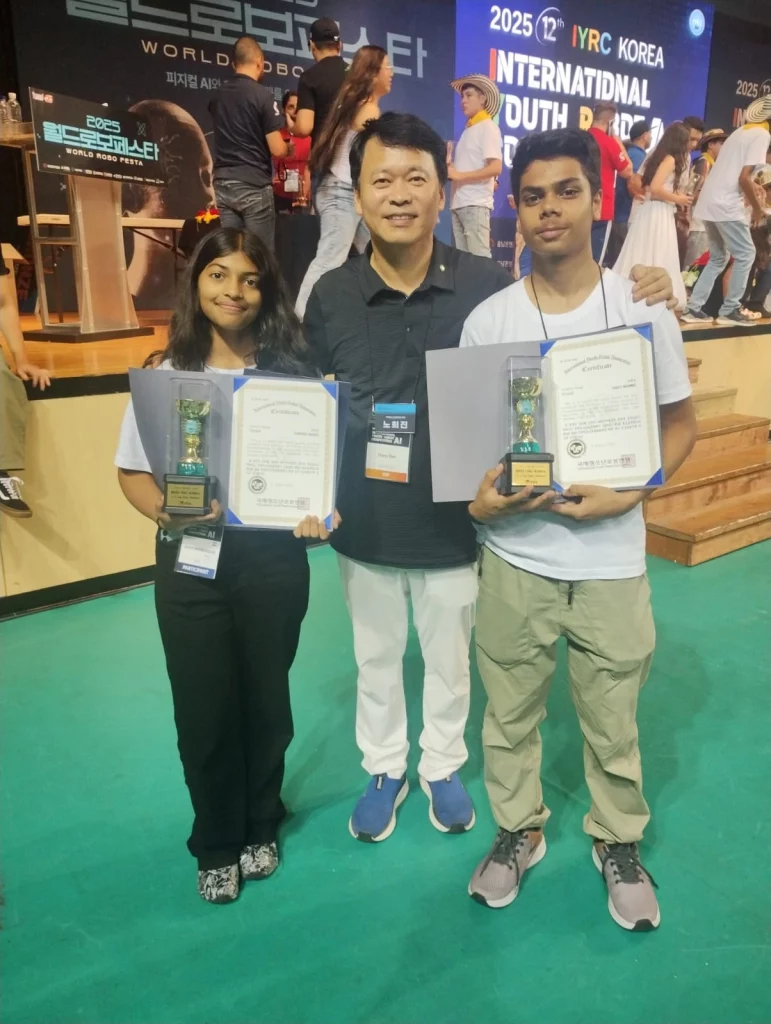

Avanthika and Faaris at IYRC
Early spark in robotics
Faaris’s interest in robotics sparked in 2023, setting him on a journey of innovation and learning. With constant guidance from his coach and support from his parents, he quickly began creating impactful projects.
His early work included participating in the Delhi Robotics Competition as part of his school’s planning team, building a line follower robot for the Mekathlon competition organised by Orchids International School, and designing a piezo robot for school robotics activities.
“I also showcased Megatron, a robot capable of sensing human emotions at the Hitex Fair in 2024,” says the Hyderabad-born innovator, who always wanted to make something that could actually help people with different needs all in one device.
Inspiration at home
His father is a software professional, and mother, a teacher. Faaris says his father is his biggest inspiration, who has always motivated him to work hard, stay disciplined, and keep learning.
“I also receive constant support from my mom, encouragement from my family and friends, and guidance from my coaching sir. Together, they inspire me to explore new ideas, take on challenges, and keep innovating,” says the teenager who is interested in courses related to robotics, artificial intelligence, and human-computer interaction.
Aspirations to study abroad
Faaris is exploring options to study abroad to gain exposure to global innovation ecosystems and learn from cutting-edge research. “In future, I want to come up with practical solutions for real-life applications and enhance NOVA’s usability and functionality so it can help more people effectively,” he says.
He intends to make NOVA smaller, cheaper, and easier for anyone to use it. “I am planning to add more smart features that can adjust to each person’s needs. After that, I want to keep creating assistive tech that’s not just smart, but actually cares.”
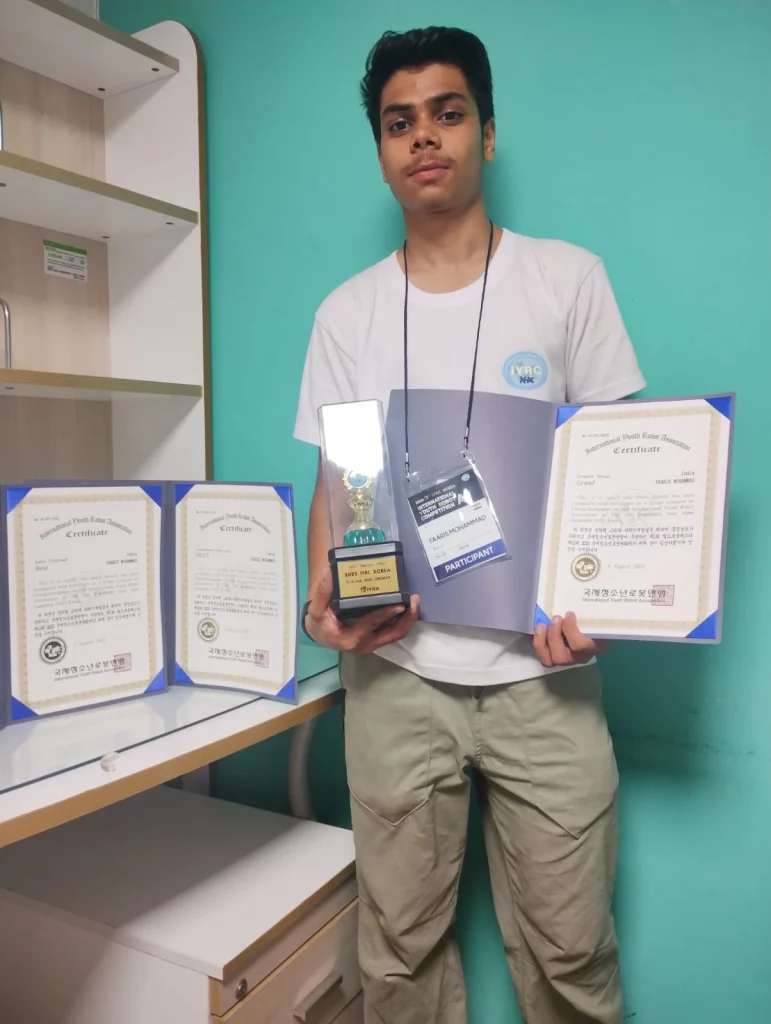

Mohammed Faaris
Striking a balance
His day starts early with school, where he focuses on academics during weekdays. On weekends, he dedicates time to working on robotics and AI projects like NOVA. “This balance lets me stay consistent with studies while exploring my passion for innovation, applying what I learn in school to real-world projects, and developing practical skills in robotics and AI.”
One advice Faaris has for students his age is to stay curious and keep experimenting. He believes youngsters shouldn’t wait until they are older to start building or exploring new ideas. “Even small projects can teach you a lot. Don’t be afraid of failure, because each failed attempt brings you closer to a solution,” he says while urging youngsters to explore robotics, AI, and innovation actively, and build skills that create meaningful solutions.
Finding time for play
Faaris also enjoys playing and engaging in recreational activities, which keeps him creative and balanced. “This mix of academics, innovation, and play allows me to approach projects like NOVA with fresh ideas,” he signs off.
ALSO READ: Vidya Ambati’s breakthrough: How a teen scientist found a new way to tackle arthritis

